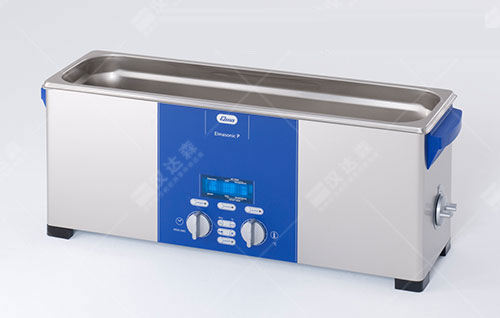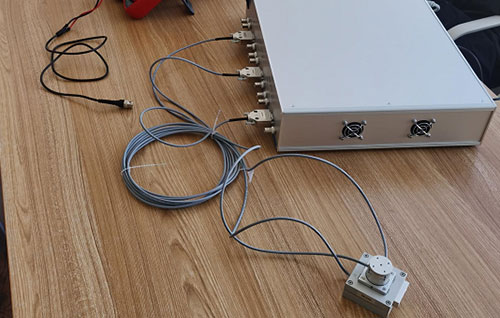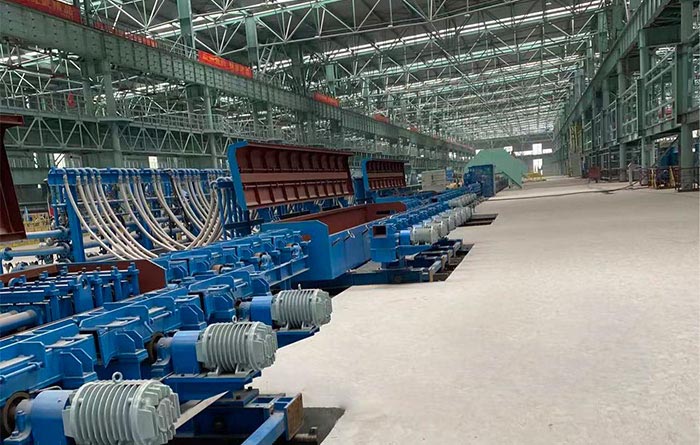This chapter will primarily introduce our representative product in the power transmission field � the universal joint. As we know, the universal joint utilizes its characteristics to enable continuous rotation between two shafts that are not on the same axis (where there is an angular misalignment), reliably transmitting torque and motion. It has a significant angular compensation capability, features a compact structure, and offers high transmission efficiency.
Elbe universal joints are a German brand and are currently widely used in China across various applications requiring angular compensation and high transmission efficiency, especially in mechanical systems involving shaft misalignment, the need for cushioning and vibration damping, and improved dynamic performance of shaft systems. Their application range is extensive, including but not limited to the following sectors:
Heavy Industry: Hoisting machinery, engineering transport machinery, mining machinery, ship machinery, etc.
Light Industry: Rubber machinery, papermaking machinery, packaging machinery, food processing machinery, etc.
Simultaneously, Elbe universal joints are widely used in glass manufacturing machinery. During the production of flat glass, processes such as cutting, edge breaking, inspection, and stacking must be completed while the glass is transported along the cold end. To improve the efficiency of the entire system, it is crucial to ensure the smooth and rapid transportation of the glass base sheet, accurately transferring it between upper and lower conveyor rolls and various branch line rolls. The power for the rolls comes from electric motors, and the universal joint plays a key role in this context by transmitting and distributing the motor's power and kinetic energy to individual rolls, ensuring the overall operation of the equipment.

Currently, most major domestic glass manufacturers primarily use imported production lines from the German brand Grenzebach.

The diagram shows the conveyor transport of the formed glass base sheet on cold end rolls,Assembly line operation that coordinates with robotic arms for palletizing. (coordinating with robotic arms for palletizing in an assembly line operation). The equipment level of the cold end in float glass production lines varies due to differences in scale, product types, quality requirements, and transport methods among different lines, but the basic functions of the cold end equipment are the same. Currently, the automation level of the cold end in float glass lines is very high, encompassing automatic processes from various inspections, cutting and breaking, quality grading, surface protection, sheet separation and picking, to stacking and packing. Ensuring the smooth operation of the glass on the rolls requires guaranteeing sufficiently stable and synchronized rotation of the rolls themselves. In the following diagram, the motor and reducer are connected via a universal joint to achieve smooth power transmission. This drive solution was originally designed by the German manufacturer and involves components such as the motor, reducer, Elbe universal joint, and locking assemblies from the German brand St�we. We can provide procurement and technical support services for all the aforementioned brands and products.

Cold end drive structure
Compared to the structure of imported production lines, the author, while attending the 33rd China International Glass Exhibition, learned about many domestic production line equipment and found that currently, many domestic conveyor roll drive systems use cheaper structures such as chain drives or belt drives. However, while chain drives and belt drives each have their advantages, compared to the stability of universal joints, chains might experience breakage or derailing under excessive load, and belts might slip. In summary, although the universal joint drive solution might have a slightly higher budget, considering the high-intensity, non-stop production operation mode of glass plants and the losses incurred from downtime due to failures, choosing universal joints is indeed a prudent solution.

Our Elbe universal joints are manufactured in the original German factories and can currently be equipped with dust protection devices according to user requirements. We can also provide users with various technical services such as type selection alternatives, installation, and after-sales support. For some universal models, such as those with a length of 420mm, a telescopic amount of 70mm, and a torque rating of around 1000 Nm, we currently maintain substantial stock to meet various needs. Welcome to inquire.




